Sony Teases Next-Gen PlayStation: Custom AMD Chip with Zen 2 CPU & Navi GPU, SSD Too
by Ryan Smith on April 16, 2019 10:45 AM EST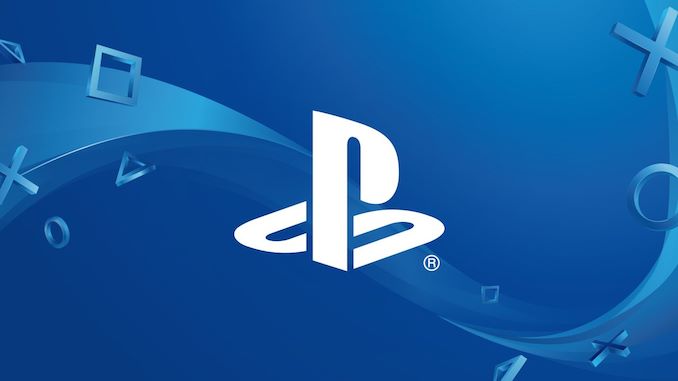
After years of speculation about what could be and what Sony may be up to, the company is finally starting to ramp up the long launch cycle for their next-generation PlayStation console. In an exclusive article published this morning via Wired, Sony games guru and system lead system architect Mark Cerny laid out a few tantalizing tidbits about the still unnamed console, offering some basic information on the underlying system architecture while promising that it’s “no mere upgrade.”
The focal point of Wired’s article is, as many AnandTech readers would expect, on the chip at the heart of the system. Cerny and Sony (and AMD) are now confirming that yes, AMD is once again putting the console’s central processor together. The cutting-edge chip will be built on an unnamed 7nm process, and will incorporate all of AMD’s latest technologies. And while neither Cerny nor AMD are going quite so far as to call it an APU – AMD’s favored name for a chip with CPU and GPU cores integrated – it’s clear that this is very much a single chip, and seemingly an APU in everything but name.
Dissecting AMD’s Chip – Zen 2, Navi, and 3D Audio
The big news here of course is that Cerny is confirming that Sony is tapping AMD’s latest CPU and GPU architectures for the next-generation PlayStation’s chip. On the CPU side we’re looking at 8 CPU cores based on AMD’s Zen 2 microarchitecture. This is the same CPU microarchitecture that AMD is expecting to launch in PCs mid-year, with products such as their Ryzen “Matisse” CPU and second-generation EPYC “Rome” processors. While we’re still waiting to see just how well the Zen 2 architecture performs in the real world, it’s succeeding the already very powerful Zen (1) architecture, so everyone has high expectations here and AMD seems eager to deliver on them.
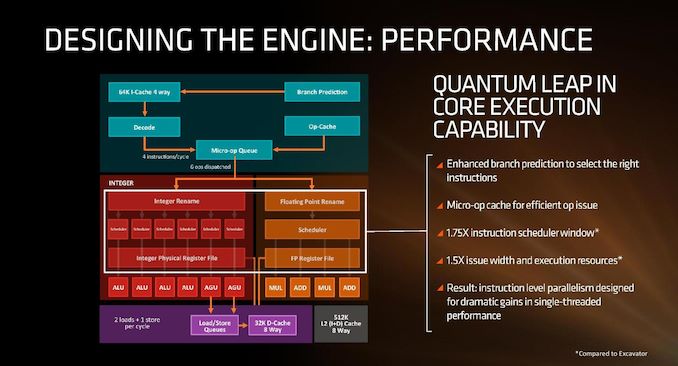
AMD Zen (1) High-Level Architecture
Meanwhile on the GPU side, AMD will be tapping their forthcoming Navi GPU architecture for the chip. Unlike the CPU side, Son and Cerny aren’t saying anything here about the GPU configuration, so there’s little to be said about performance; all of that will come down to how big of a Navi GPU block Sony has asked for. Navi itself is a codename we’ve seen on AMD’s GPU roadmaps since 2016, however we still know relatively little about the architecture beyond the fact that in 2016 at least, AMD was intending to focus on scalability and support for next-generation memory (which at this point we’d take to mean GDDR6). Like the Zen 2 CPU architecture, we’re expecting Navi-powered GPUs to start shipping this year for PCs, so we should have a better idea soon of all of what Navi will entail.
However in the meantime, Cerny himself did open up a bit about Navi – or at least the version that will be going into Sony’s chip. The next-generation PlayStation will support ray tracing, mirroring developments we’ve seen in the PC world in the last year with the introduction of DirectX Raytracing and hardware support in rival NVIDIA’s GPUs. Over the last couple of years, ray tracing has increasingly been heralded as the next evolution in GPU rendering technologies, as it allows for more realistic rendering methods to be used, especially with regards to light. Ray tracing is expensive, but done right it can add to a game in ways that can’t be done cheaply (if at all) with pure compute-shader based approaches.
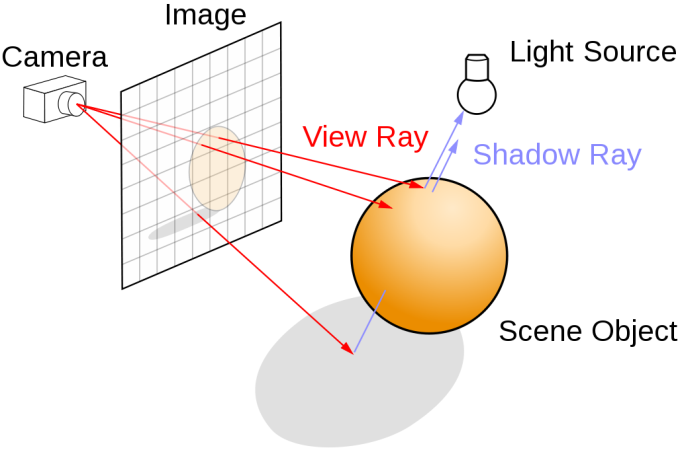
Ray Tracing Diagram (Henrik / CC BY-SA 4.0)
Thus far AMD itself has been very quiet on the subject of ray tracing, and while tangential to today’s PlayStation announcement, I’m not sure we should read into this as a family-wide Navi feature. Sony’s previous custom chips used in the original PlayStation 4 and PlayStation 4 Pro have brought forward certain future hardware features – the most notable of which being Rapid Packed Math for the PS4 Pro – so it’s possible that Sony has once again asked for the same here. We also don’t know if ray tracing support for Sony’s chip is being implemented via fixed-function hardware units, or if it’s being implemented via programmable shaders, which could have significant ramifications for ray tracing performance as well as die size. We’ll know more for sure once AMD fully unveils Navi, which is presumably happening a bit later this year.
At any rate, on both the CPU side and the GPU side, this represents a significant step up from both the PS4 and PS4 Pro. On the CPU side in particular, the Zen 2 CPU microarchitecture is lightyears ahead of the Jaguar CPU cores used in all of the PS4s, incorporating an uncountable number of changes to build a bigger, better chip with a much higher IPC rate than Jaguar. So even if AMD and Sony clock the chip conservatively, core-for-core the new chip should easily run circles around the PS4 (Pro) processor. A very quick and dirty estimate on our end, digging through our benchmark archives, is that even a Zen 1 processor is 3-4x faster than a Jaguar processor with the same number of cores; and this likely underestimates what Zen 2 can do.
On the GPU side we have less to work with, mostly due to the lack of information about the architecture and perhaps more importantly, what kind of configuration Sony intends to go with. Even with its improvements, the PS4 Pro’s GPU is at best a mishmash of Graphics Core Next (GCN) 2 and GCN 5 technologies, with the bulk of the chip seemingly being the former, following the very GCN 2-like design of the original PS4’s processor. So Navi is going to be well beyond this, though to what degree remains to be seen. Sony is looking to push 8K TVs with the next PlayStation, so whatever it is, I don’t expect that they’ll skimp on GPU horsepower.
One of the outstanding questions on AMD’s chip will be whether it’s a traditional, monolithic design, or if they are going with a chiplet based approach. We already know that Zen 2 CPUs for PCs and servers are taking the latter, with an I/O die being paired with one (or more) CPU dies. However we also know that AMD isn’t using chiplets for their eventual Zen 2 APU. And in the middle are good reasons both for and against their use. Chiplets are helpful in connecting other processing blocks – a very useful feature for a semi-custom design like a console chip where the owner may want to incorporate silicon from other vendors as well – however it may not be as cost or resource effective for something that’s going to be produced in such mass numbers like a gaming console processor.

Zen 2 "Matisse" Chiplet Prototype
Finally, while admittedly taking the back seat to the CPU and GPU elements of AMD’s new chip, Wired’s article also confirms that AMD is providing part of the audio solution for the console. The AMD chip will incorporate what Wired is calling a “custom unit for 3D audio”, with Cerny chipping in that Sony is going for more immersive sound. If you’ll excuse the pun, this sounds a lot like a combination of ray casting for audio to better compute reflections and other ambiance such as convolutions, combined with improved Head Related Transfer Functions for 3D audio spatialization.
Equally as interesting however is that this is apparently a hardware unit. AMD tried this once before with TrueAudio, with portions of the tech being used for the PS4. However in the PC world TrueAudio only showed up in a few GPUs, with AMD abandoning it starting with the Polaris GPU architecture in 2016. Instead, AMD’s most recent audio efforts such as TrueAudio Next, have been focused on GPU shader programs rather than dedicated hardware. So while the next-generation PlayStation will need some kind of hardware audio processor for basic duties and PS4 support, I’m very curious how much of AMD’s audio solution is fixed-function hardware versus shader programs.
SSDs Too!
While providing the single most important chip in the next PlayStation, AMD isn’t the only hardware vendor providing silicon for the console. In fact as it turns out, the console will have a lot of silicon, quite literally, thanks to the inclusion of an SSD for storage. The SSD replaces the HDD used in the current-generation PS4s, and as we’ve seen time and time again, even the slowest modern SSD offers vastly improved transfer rates and access times compared to fast HDDs, never mind the 2.5-inch 5400 RPM HDDs that have been used in the PS4.
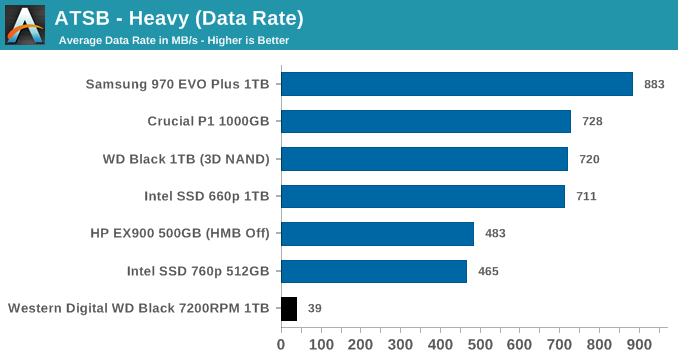
Without rehashing every bit of Wired’s article here, the inclusion of an SSD as a baseline feature in the next PlayStation is an important decision. In terms of hardware, it means that Sony can incorporate a modern, PCIe-based NVMe drive, instead of basing all of the system’s storage around SATA, as was the case for the PS4 family. In fact Cerny is promising that the upcoming console’s SSD “has a raw bandwidth higher than any SSD available for PCs”. Presumably, this is a veiled reference to PCIe 4.0, which we know that AMD’s Zen 2 processor family supports and would allow for peak transfer rates that are twice as high as one of today’s equivalent PCIe 3.0 drives. But as this is a custom console, proprietary solutions are not off the table.
Untouched in Wired’s article, but certainly to be critical to the final console, are the economics of this decision. SSD prices have been crashing heavily over the last 6 months – we should be below $0.10/GB by the time the next PlayStation launches – however HDDs are still cheaper per gigabyte. As it stands, Sony has increasingly been phasing out 500GB drives for 1TB drives as the standard for most PS4 models (as Wired notes, Red Dead Redemption 2 alone is nearly 100GB), so an equivalent SSD would be over $100 in NAND flash memory alone at today’s prices. So even if prices continue to drop, SSDs are by no means cheap. Which means that it will be interesting to see if Sony’s SSD is a pure SSD solution, a hybrid solution, or if they do something else to balance speed with costs.
Yes, It’s Backwards Compatible. No, It’s Not This Year
Wrapping up Sony’s early hardware teaser of the next-generation PlayStation, Cerny and Wired’s article also confirm something that most people would expect with Sony’s architecture choice: the new console will be backwards-compatible with PS4 games. The devil is in the details on this, of course, but the important part is that the underlying architectures are compatible. The PS4 was an x86 CPU and AMD GPU, and the next console is once again cut from the same broad cloth.
I would expect that the CPU side of matters is relatively trivial here since Zen 2 is for all practical purposes a very big superset of features found in the Jaguar microarchitecture. However the GPU side is a bit more of a wildcard, again owing to what we don’t know about Navi. The less GCN 2-like Navi is, the more work is required for backwards compatibility, as Sony and AMD need to paper over the hardware differences so that PS4 games using the low-level GNM graphics API can still run.
Finally, it goes without saying that today’s hardware reveal is only the first part of what’s clearly a much longer-term promotional and rollout plan for the next PlayStation console. Sony has already announced that they’re skipping E3 this year, and while the company isn’t saying when their next console is due out, 2019 is clearly out of the question. If nothing else, AMD for their part typically needs some time to integrate new technologies together into a single chip for a semi-custom product, and with Zen 2 launching mid-year and Navi being ambiguous about when in 2019 it would land, that wouldn’t leave AMD much time to prepare a chip for Sony for this year.
Of course for Sony this isn’t a bad thing; this means the company will have plenty of time over the next year (or more) to dribble out details about the new console and build up hype for it before it eventually launches. And, I’m sure, we’ll have plenty more hardware reveals along the way.


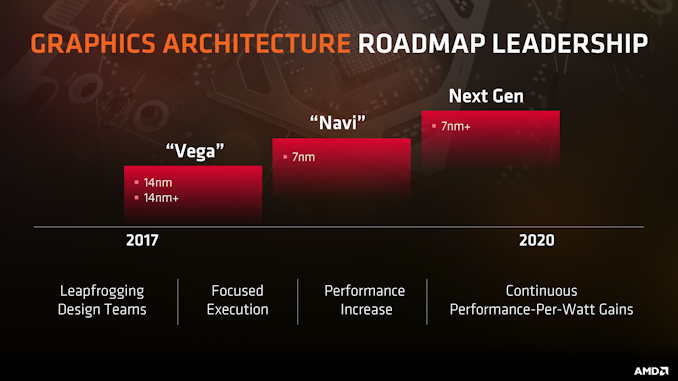
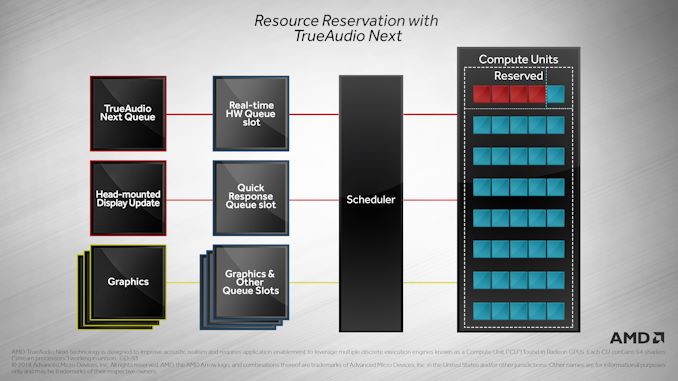
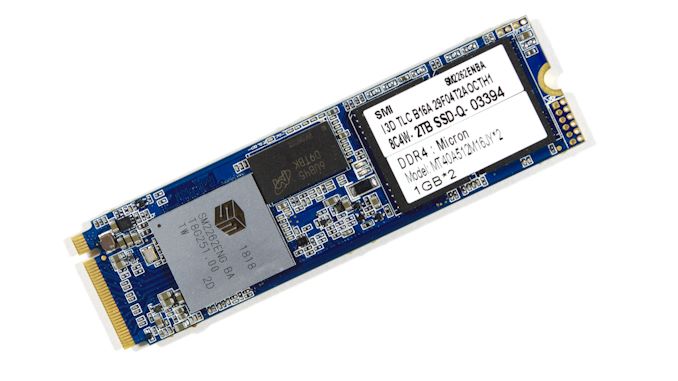








186 Comments
View All Comments
blinnbanir - Wednesday, April 24, 2019 - link
The only thing AMD loses on is power drawf4tali - Friday, April 19, 2019 - link
If all this is true then it's highly likely one of the following is also true:a) Launch price of 700 euros
or
b) Launch date of 2021
:P
Darcey R. Epperly - Saturday, April 20, 2019 - link
Cut the cache sizes on the die.mode_13h - Monday, April 22, 2019 - link
That would really hurt, if they use unified GDDRx memory, which they're almost certainly going to do.